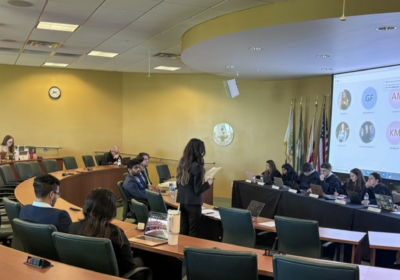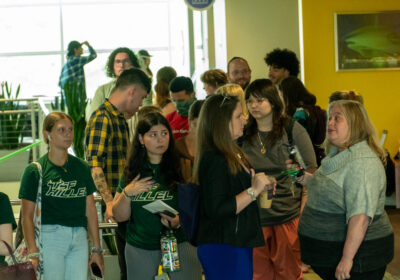Sea radiation is another blow to Japans fishermen
TOKYO – Fishermen who lost their homes and boats in Japan’s tsunami now fear radioactive water that had been gushing into the Pacific Ocean from a crippled nuclear plant could cost them their livelihoods.
The contaminated water raised concerns about the safety of seafood in the country that gave the world sushi, prompting the government to set limits for the first time on the amount of radiation permitted in fish.
Authorities insisted the radioactive water would dissipate and posed no immediate threat to sea creatures or people who might eat them. Most experts agreed.
Still, Japanese officials adopted the new standards as a precaution. And the mere suggestion that seafood from Japan could be at any risk stirred worries throughout the fishing industry.
“Even if the government says the fish is safe, people won’t want to buy seafood from Fukushima,” says Ichiro Yamagata, a fisherman who lived in the shadow of the Fukushima Dai-ichi plant. “We probably can’t fish there for several years.”
Fukushima is not a major fishing region, and no fishing is allowed in the direct vicinity of the plant. But experts estimate the coastal areas hit by the massive wave account for about a fifth of Japan’s annual catch.
In a rare bit of good news, the utility that owns the crippled nuclear plant about 140 miles northeast of Tokyo said highly radioactive water that had been leaking into the ocean from a crack discovered over the weekend had stopped early Wednesday.
Tokyo Electric Power Co. spokesperson Naoki Tsunoda said the company’s attempt to stem the leak by injecting 1,500 liters of “water glass,” or sodium silicate, and another agent near a seaside pit where the water had been leaking appeared to have been successful.
The new limits on radioactivity in fish were imposed after TEPCO announced water tested near the plant Saturday contained levels of radioactive iodine 7.5 million times the legal limit. That level had dropped to 5 million two days later.
Japan said some fish caught last week about 50 miles from the plant would have exceeded the new safety limits, which may change with circumstances.
Fears of radiation contamination prompted India to announce Tuesday that it was halting food imports from Japan. Few countries have gone so far, but India’s three-month ban reflected the unease created by the nuclear crisis among consumers. India said the ban would last three months, or until the risk subsides. It planned to review the situation weekly.
Yamagata, whose home is within the 12-mile evacuation zone around the plant, is staying in a Tokyo soccer stadium with his wife and about 140 other refugees. He expects his fishing days are over.
After the magnitude-9.0 earthquake March 11, he ran outside and watched the second floor of his house collapse, then fled with his family when tsunami warnings sounded.
Since then, he hasn’t been allowed to return to check on the 5-ton boat he used to troll for flounder. He assumes it’s gone, too. The tsunami killed up to 25,000 people and left tens of thousands homeless as it swamped about 250 miles of the northeastern coast and knocked out power to the plant.
Workers there have been desperately trying to cool down overheated reactors, but the effort has required spraying large amounts of water and allowing it to gush out wherever it can escape, sometimes into the sea.
Radioactivity will continue spewing into the air and water until cooling systems are restored.
The radiation standards for fish will be the same as for vegetables. After spinach and milk exceeded safety limits following the quake, health experts said people would still have to eat enormous quantities of tainted produce or dairy before getting even the amount of radiation contained in a CT scan.
Japan imports far more fish than it exports, but it sent the world $2.3 billion worth of seafood last year.
Some people were undaunted. At Sushizanmai, a sushi bar just outside Tokyo’s famed Tsukiji fish market, customers were still eating Japan’s famed raw fish delicacies Tuesday night.
But chef Seiichiro Ogawa said the fuss over radiation could hurt business. His restaurant is trying to get more fish from the western part of Japan, which has not been affected by the nuclear crisis.
“Japanese customers are especially sensitive to this kind of thing, so I’m worried they’ll stop eating sushi,” said Ogawa, who has already seen his business drop 50 percent after foreigners stopped visiting the city after the quake. “We need this nuclear problem to be resolved.”
TEPCO also said this week it is purposely dumping more than 3 million gallons of low-level radioactive water into the sea to make room in a storage tank for more highly contaminated water that it needs to remove before workers can restore important cooling systems.
That announcement angered Fukushima’s federation of fisheries groups, which sent the company a letter of protest.
“Our prefecture’s fisherman have lost their lives, fishing boats, piers and buildings due to the Great Eastern Japan Disaster,” federation chairman Tetsu Nozaki said in the letter. “This low-level contaminated water has raised fears among fishermen that they will never be able to fish in our prefecture’s waters again, and we absolutely want you to stop.”
TEPCO’s reputation has taken a serious hit in the crisis. On Tuesday, its stock dropped 80 yen – the maximum daily limit, or 18 percent – to just 362 yen ($4.30), falling below its previous all-time closing low of 393 yen from December 1951. Since the quake, the share price has plunged 80 percent.






